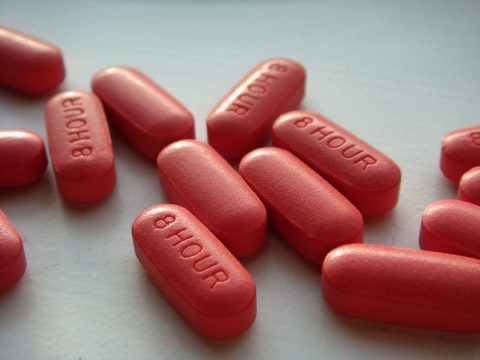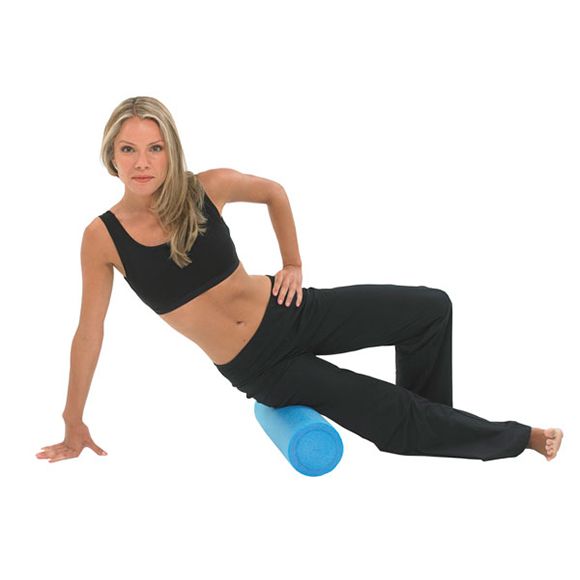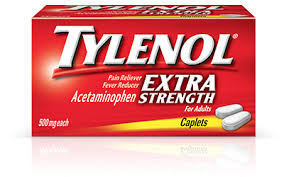
The point of exercise and training is to break the body down. Your workout is actually doing damage. This damage is essential and intelligent to you getting stronger, faster, quicker, and more efficient. The only way the body gets better is through challenges.
The problem is that many think it’s the workout that creates the magic. The actuality is that it’s the recovery that is key. Most people might workout 30 minutes. That leaves 23 1/2 hours to recover.
Reassess these 3 common practices that put a damper on your recovery and ultimately your performance.
Many consume coffee pre-workout to boost their performance. It’s essentially a performance enhancing drug. There’s no denying that coffee boosts energy. Just ask the 54% of Americans over the age of 18 who consume coffee daily. It’s also no mystery that kids consume caffeinated beverages like energy drinks and such, which would drastically raise that 54%, if you included the entire population.
The problem is that this habit may boost short term performance at the expense of longevity, injury prevention, and recovery. If you ever have lab work, usually there is a panel that lists out the type of white blood cells. You will see these as neutrophils, lymphocytes, monocytes, eosinophils, and basophils.
Monocytes are cells that clean up inflammatory damage as well as debris from destroyed microorganisms. They differentiate into macrophages and play a huge role in tissue repair whether you are injured, you are sick, or you have been training hard. Without monocytes, muscles would not be able to heal after training or injury.
Cortisol and adrenaline (hormones released during times of stress, which can be physical, chemical, or emotional) lower macrophage activity and count. In essence stress lowers your immune system. Your immune system stimulates inflammation. Caffeine is a direct hit to the adrenals, causing release of cortisol and adrenaline, lowering your healing inflammatory response triggered by your immune system.
Think about this way. If you’re running from a bear, it would not be efficient if you had to stop to cough, sneeze, or dig a hole and pop a squat because you’re fighting the flu. It also wouldn’t be conducive to your survival if you rolled your ankle and it ballooned up and caused you to be immobile. Ever get injured during the heat of competition but not realize it until it was all over? That’s the cortisol and adrenaline kicking in to keep you surviving. Caffeine is a stress on the body.
When you’re finally safe from the bear, cortisol and adrenaline will diminish, allowing your immune and inflammatory reaction to kick in allowing the body to heal, recovery, and repair. If you’re constantly consuming caffeine and adding more bear attacks to your system, your recovery diminishes, then performance, and eventually you say, “I’m just getting old.” As a result, you’re more apt to consume more caffeine to try and keep up. The reality is the more you cycle increased caffeine, the more you fall behind the pack.
There are tests to see if you’re stimulating the adrenals too much. In office, I use Heart Rate Variability. This basically tells us if your autonomic nervous system is imbalanced, how far imbalanced, and how long can you sustain your activity load before burnout.
We can also do some saliva testing specifically for adrenal function.
If you decide to kick the caffeine habit, there’s a good chance you will go through some withdrawal type symptoms. This doesn’t mean to go back on it to make the symptoms better. It’s like someone coming off of meth, it sucks but would you keep giving them meth to make them feel better?
Mobility
Mobility is a word you will hear quite often in the CrossFit community. Personally, I love doing CrossFit and would recommend anyone in Colorado Springs new or experienced to the workout regime to check out my pals at CrossFit Continuum. You can even join me in the mornings for a WOD (no caffeine of course).
Mobility is basically the terminology for making sure your muscles, joints, and all connective tissue can get through the full range of motion to perform the workouts. Humans are dynamic and the better the mobility, the better adaptability as you increase load, reps, speed, or balance and coordination. Strength without mobility is useless.
A lack of mobility or flexibility is not always necessarily ‘tight’ muscles. Your muscles are controlled by nerves and fed by nutrients. Your nervous system has to tell your muscles and joints to move in a certain way. This is called motor control. It’s your brain talking to your body to support it, protect it, and enhance performance.
If you watch how a child plays they get down into a full squat and can stay there for what seems like hours. Many say it’s just because they are flexible. It’s more than just flexibility. They have pure, uninhibited motor control. That motor control diminishes as soon as we slap them in school and tell them to sit there all day and you’re not allowed to play or fidget.
I’m sure you’ve been sitting in a chair for the majority of your life by now and told not to fidget. What do you think has happened to that motor control? We can test it by you trying to get into a full squat like a child. If you are having trouble because you think you aren’t flexible enough, I want you to instead lay on your back and then pull your knees into your chest. Better, right?
 Most people can lay on their back and pull their knees into their chest but have trouble squatting. Being able to pull the knees to chest proves you have the mobility, flexibility, and range of motion to get into a squat. Because you have trouble doing it while standing, this signals a motor control problem. In other words, the problem is in your head (your brain) not your hips.
Most people can lay on their back and pull their knees into their chest but have trouble squatting. Being able to pull the knees to chest proves you have the mobility, flexibility, and range of motion to get into a squat. Because you have trouble doing it while standing, this signals a motor control problem. In other words, the problem is in your head (your brain) not your hips.
The body has checks and balances from major joint to major joint. Certain joints will be used more for mobility while others will be used for stability. The areas that are mobility centered are the big toe, ankle, hips, and thoracic spine. The areas that are more stability centric are the foot arch, knee, low back, and neck.
Between those 2 areas, where do you think people have the most injuries and pain? As a chiropractor, the majority of people come in complaining of problems in their arch like plantar fasciitis, knee problems, low back issue, and neck pain. I run them through a surface EMG along the spine and will often see a pattern to objectify these checks and balances. The thoracic spine is under active while the the neck and low back are over active.
It amounts to an increase in stability of the upper and lower spine to compensate for a dysfunction in mobility of the mid spine. Other than working out, most people will develop that mobility dysfunction in their mid back because they are sitting at a computer, slouching, and only get up to move to eat or pee. No fidgeting allowed.
From a pure training and performance viewpoint, Andrew Read wrote a great piece about this very topic. Read writes that ‘in the gym or box, people will try to overcome this perceived lack of mobility (tightness) by stretching, rolling, and smashing the ‘tight’ muscle group.’ The body always works as a whole, not just the sum of it’s parts. Doing just mobility may set you up for future problems.
To add an element to your stretching, rolling, and smashing, you need to RAIL it. This is a system developed by Dr. Perry Nickelston that stands for:
Release
Activate
Integrate
Locomote
Read says most people are great at the Release component, using foam rollers, lacrosse balls, bands, stretching, and other fascia release techniques. It’s the other 3 components that fall short. The muscle that is bound up needs more than just to be released. It needs to be re-educated. The brain will move away from pain so by adding more range of motion without motor control, you may just be setting yourself up for re-injury. In other words, making a joint more mobile without more control means you may injure easier or not recover as you would desire.
What does Activate look like? It’s simply using the muscle. If you’re foam rolling your glute, then activate it afterwards with some butt squeezes or leg extensions. Integrating means using the muscle and the range of motion in a basic movement pattern. Crawling is great for this. Rolling on the floor is another great movement to do this. Look at how babies and toddlers move around and mimic them.
Finally, you need to locomote. I love how Read puts it (maybe he got it from Nickelston) but the final stage of Locomote is the money maker for your recovery.
“…only in standing are we in a truly functional posture. Only in standing can the final work be done. If your body works right in running, it will do everything else properly for you too as it’s the hardest pattern for the body to get right.”
As much as people love or hate running, this is the most efficient way for a human to move. Get good at it. The next time you feel the need to smash a muscle group, follow that urge with some flexing, crawling or rolling, and running. Your brain will thank you.
Pain Relievers
Most people are reaching for one of two types: Acetaminophen or NSAIDS.
Acetaminophen is more commonly known as Tylenol. People use this to reduce pain and fever but has no effect on inflammation. How does pain travel through the body? Via the nervous system. Tylenol in effect elevates your pain threshold. In other words, you have to create more damage to create more pain before you’re going to feel it if you’re loaded up on Tylenol.
You know your workout is going to hurt so many will pop some Tylenol before the workout and then add more after the workout and keep training, ‘for the love of sport.’ I grew up in the sports era with the saying, ‘pain is weakness leaving the body.’ I think we can change that now to ‘stupidity is Tylenol entering the body.’
What’s the matter with a higher pain threshold to continue training? The problem is Tylenol (and generics) is the #1 cause of acute liver failure. You think you don’t take much? Do you take more than 1? Then you technically overdosed.
It’s recommended d to take no more than the maximum dose of 400mg/day. Regular strength Tylenol has a dose of 325 mg/PILL. But who takes the regular dose? And who takes just one? Give me the Extra strength stuff. That will run you 500 mg/PILL. Congratulations, you just ODed.
d to take no more than the maximum dose of 400mg/day. Regular strength Tylenol has a dose of 325 mg/PILL. But who takes the regular dose? And who takes just one? Give me the Extra strength stuff. That will run you 500 mg/PILL. Congratulations, you just ODed.
Some Whisky of Vodka may be safer pain reliever than Tylenol.
I don’t want to destroy my liver, I’ll just stick with the NSAIDS and knock out the inflammation, which is the root cause of the pain, right? You may know NSAIDS as Aspirin, Excedrin, Bayer, Ibuprofen, Advil, Motrin, Naproxen, and Aleve to name a few.
NSAIDS (Non Steroidal Anti-Inflammatory Drugs) work by inhibiting a class of messengers called COX-1 (Cyclo-oxygenase) and COX-2. These messengers inhibit the activity of prostaglandins.
Prostaglandins are a group of lipids made at sites of tissue damage or infection that are involved in dealing with injury or infection. They contribute to inflammation, blood flow, formation of blood clots, and induction of labor.
Prostaglandins are made at sites of tissue damage or infection, where they cause inflammation, pain and fever as part of the HEALING process. When a blood vessel is injured, a prostaglandin called thromboxane stimulates the formation of a blood clot to try to heal the damage; it also causes the muscle in the blood vessel wall to contract (causing the blood vessel to narrow) to try to prevent blood loss.
Not only did you just stop the healing process cold in its tracks, you got rid of prostaglandins which protect the stomach lining. Hello ulcers and intestinal bleeding. Try absorbing all those supplements you are taking to boost performance if your stomach and intestines are a wreck.
If you’re like any other athlete, telling you to stop and rest probably isn’t going to fly. You want to take something to keep going.
3 of my favorites to safely maximize recovery and repair are from Nutriwest. I carry them in office. If you’re from out of town, they can be shipped.
Contact us to order.
SIDE NOTE. If you want to really screw up your recovery, take Excedrin. It’s a combo of acetaminophen, Aspirin (NSAID), AND caffeine. You can probably jump from a 3 story building and keep running without feeling anything.



1 Comment